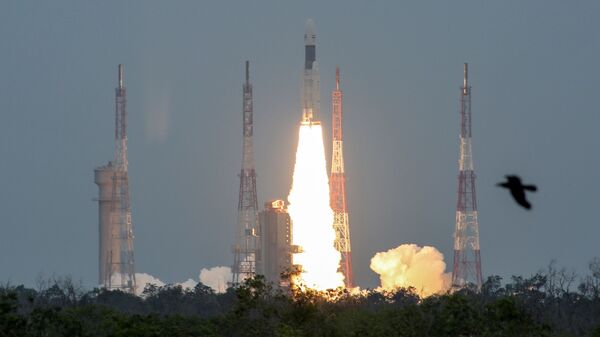The Indian Space Research Organisation, ISRO tweeted that “all spacecraft parameters are normal”. The third orbit raising exercise will take place on 29th July.
Second earth bound orbit raising maneuver for #Chandrayaan2 spacecraft has been performed today (July 26, 2019) at 0108 hrs (IST) as planned.
— ISRO (@isro) July 25, 2019
For details please check https://t.co/raXNQB76O6#ISRO
The ISRO will carry out 15 crucial manoeuvres in the next one and a half months and finally take Chandrayaan-2 around the Moon, the closest astronomical body to Earth, for a soft landing.
The launch of the ambitious mission heading to the Moon’s South Pole achieved an orbit of 6,000 km more than targeted on the first day.
The launch was initially planned for 15 July from Satish Dhawan Space Centre in Sriharikota but was abandoned due to a “technical snag”. Finally, the spacecraft successfully launched on 22 July.
Chandrayaan-2 - an orbiter, lander and rover, is planned to land on the lunar surface on the 48th day, or 7 September 2019, covering a distance of about 384,000 km. It carries 14 payloads to carry out experiments.
The success of the mission will induct India into the “Big Boys Space Club” as national media put it, joining the US, Russia and China in successfully having soft-landed on the Moon. It will be the first space mission to attempt to soft-land the lander –Vikram and rover Pragyan in a high plain between two craters at a latitude of about 70 degrees south.
The lunar South Pole is especially interesting because the area remains in shadows and is much larger than its North Pole. The possibility of the presence of water there is much higher, and the craters in cold traps could contain a fossil record of the early Solar System. India’s first Lunar Mission in 2008 had identified traces of water on Moon.
The 3,850 kg spacecraft was launched on a massive rocket, GSLV Mark III, which had a 100 per cent success rate, with two launches and one sub-orbital flight. It is India’s most powerful launcher to date and is entirely designed and fabricated in the country.





